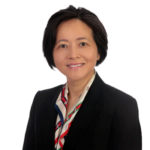Webinar: Navigating the Chinese Patent System: What U.S. Patent Counsel Need to Know, Changes After the Phase One Trade Deal
Events  Letao Qin November 11, 2020
Letao Qin November 11, 2020
This CLE webinar will guide U.S. patent counsel and companies on Chinese patent law and what they need to know about the Chinese system. The panel will address changes to the Guidelines for Examination and new draft amendments, current litigation trends, and the Anti-Unfair Competition Law (AUCL). The panel will offer U.S. companies and counsel best practices for increasing IP protection under the Chinese system.
Date & Time
Description
Protecting IP in China is an essential element in any global company’s overall strategy. By obtaining and enforcing Chinese patents, U.S. companies can directly pursue alleged infringers in China. China may be favored for patent infringement litigation because patent infringement cases in China are fast-paced and low cost and because Chinese IP courts are not reluctant to order injunctions. For example, the average time from filing to a verdict at Beijing’s IP court is four months vs. the U.S. courts’ two-plus years. U.S. companies and their counsel must understand the Chinese IP system to leverage its advantages effectively.
The China National Intellectual Property Administration (CNIPA) announced the newly amended Patent Examination Guidelines effective on Nov. 1, 2019, seeking to improve patent quality and efficient examination. In April 2020, the Supreme Court of the People’s Republic of China published amended draft provisions regarding the interpretation of the patent law and its implementing regulations regarding the administrative litigation of patent rejections and invalidations.
In July 2020, China released the second draft amendments to the patent law. These amendments would significantly change current patent law and the earlier draft amendment. Additionally, China is working on legislative and judicial changes to other essential IP rights.
Further, companies seeking to protect intellectual property in China should also consider the AUCL. Mostly used by Chinese companies to resolve claims that should, but cannot, be addressed by current IP laws, Chinese authorities have increased enforcement of the AUCL, resulting in substantial fines for companies.
Listen as our authoritative panel of patent attorneys provides guidance on Chinese patent law and the Chinese system. The panel will discuss the new amendments to the Guidelines for Examination and current litigation trends. The panel will also discuss the AUCL and offer best practices for U.S. companies and counsel to operate in the Chinese system and increase IP protection.
Outline
- Chinese patent law and what U.S. patent counsel and companies need to know
- Guidelines for Examination amendments
- Current litigation trends
- The success of foreign companies
- Beijing IP court’s decision in Watchdata System Co. v. Hengbao Co.
- Anti-Unfair Competition Law
- Best practices for operating in the Chinese system to increase IP protection
Benefits
The panel will review these and other priority issues:
- How the amendments to the Guidelines for Examination change patentability in China
- The role of the AUCL in IP enforcement in China
- Litigation trends in China and the advantages of using the Chinese IP system
Letao Qin has extensive experience as a patent attorney. Focusing her practice in all aspects of patent and trademark prosecution, procurement and transaction, Dr. Qin has advised Fortune 500 companies, universities, start-ups, and individual inventors to identify, capture, and protect innovations. Prior to joining Rimon, Dr. Qin was an in-house counsel at IHHI, a start-up company engaged in nuclear energy research and development. As an in-house counsel, Dr. Qin helped to establish the company’s IP program, working with the engineering team on validation of their innovations. She was pivotal in the establishment of a multi-prong IP protection strategy aimed to protect the company’s business interests, regarding patents and trade secrets. Learn more about Dr. Qin here.





